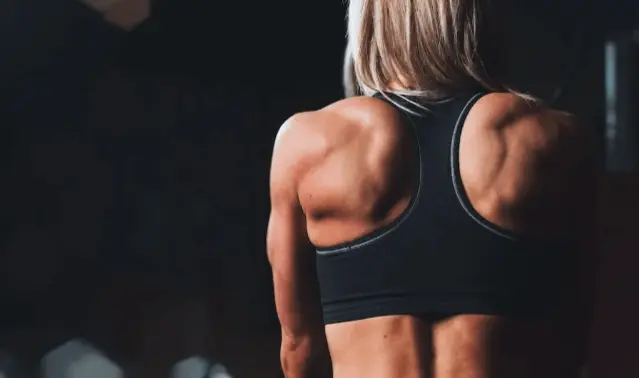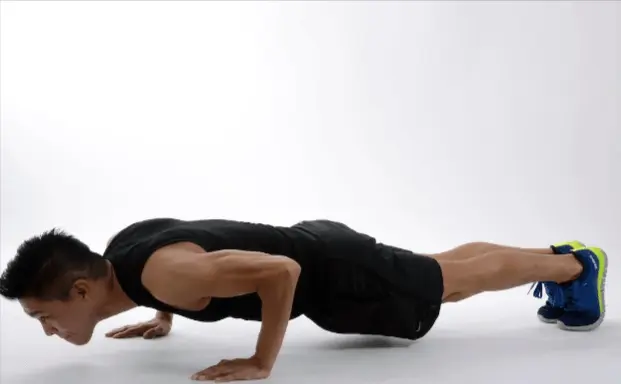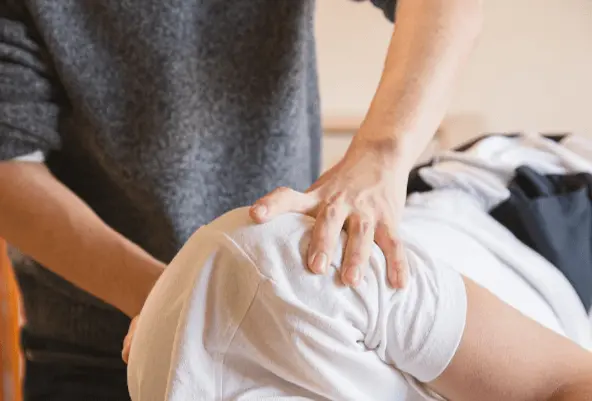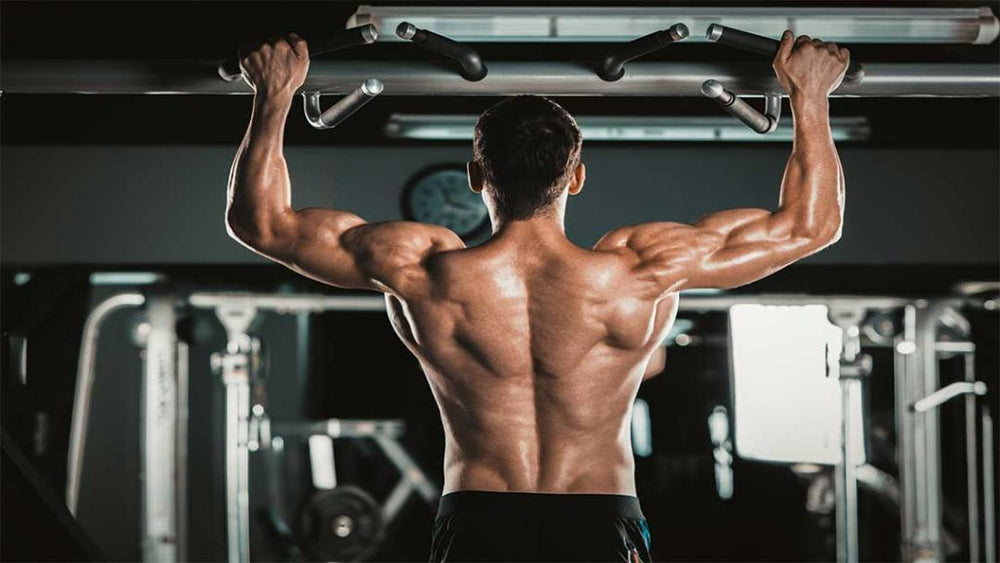Shoulder workouts play a very crucial role when it comes to good fitness. Wider shoulders are admired and desired by all as they make the frame of the person look good. Creating a triangle with the base near the shoulders and the convergence towards the hips.
Stronger shoulders tend to decrease the chance of you being injured when hitting the gym. Wider shoulders are an indication of strength making everyday tasks like lifting objects easier. These muscles better your posture, help strengthen your shoulder joints, and give sturdiness to the body providing more stability.
People wonder if it is really possible to change the width of the shoulders, in fact, is possible to widen your shoulders up to an extent though most of it is determined by your genetics.
You need to work on all the parts of the shoulder to make your shoulders appealing from the front and the back which also helps correct sloping shoulders. You need to work on 2 sets of muscles to have a satisfactory gym session that will help give you evident shoulders making you border, confident, and look appealing.

The deltoid is the main muscle that covers the shoulder from the front sides and the back, It is composed of 3 heads namely the anterior deltoid, the lateral deltoid, and the posterior deltoid. The anterior deltoid helps move your arms forwards, the lateral deltoid helps move your arms to the side and the posterior deltoid helps move your arms backward.
The trapezius is another muscle you would want to train as it connects to the shoulder and runs down to your lower back. By training right you might get some good shoulders as they are one of the easiest muscles to train as compared to others. Here are some exercises that you should perform.
To set off, warm-ups play a vital role when it comes to weight lifting.
Cross body swinging
This warm-up exercise help ready your muscles for a heavy workout that your body will be doing during the shoulder workouts like presses. It gets the blood flowing through the body.
- Stand straight with your feet place away from each other.
- Extend your arms to your sides horizontally to your shoulders.
- Swing your arms towards the midline and back continuously.
- Alternating between the hand on the top.
Plate presses
Another warm-up exercise.
- Standing with your feet apart at your hip’s width.
- Hold a light weighted plate between your hands.
- Raise your hands straight in front of the chest.
Pushups
Pushups are a really beneficial workout as they not only target the chest but also the core and the shoulder muscles, they also help strengthen the lower back.
- Put your palms on the floor.
- Make a plank position.
- Make sure your legs and straight and your hands are directly beneath your chest.
- Lower your body making sure you are just above the floor.
- Push back up without losing any form.
There is no limit to how many pushups you should do, most fitness freaks do anywhere from 300 to 400 pushups a day but for an average person to maintain a good upper body should target 50 pushups.

Incline Bench Press
Doing the normal bench press is nonbeneficial for the shoulders as most of the workload falls on the chest, but when you are inclined at an angle the load is taken by the shoulder muscles.
Use a bench with an inclination of about 30 degrees.
- Lie with your back to the bench holding the dumbbells of your weight choice.
- Hold your hands straight.
- Lower the dumbbell to your chest and avoid touching it.
- Pause and then press back up to the initial position.
Lateral Raise
Lateral raises can be performed with the help of dumbbells or kettlebells.
- Stand or sit down with a dumbbell in each hand.
- Straighten your back and engage your core.
- Slowly lift the dumbbells to the sides until they become horizontal to the floor up to the level of the shoulders.
- Hold the position and come back to the start.
Aim to perform 10 to 15 reps with good form and perform 3 sets.
Overhead Press
It is a very common exercise that requires you to press a dumbbell above your shoulders. This exercise works on all the 3 heads of the deltoid muscles, the chest, and the trapezius.
Other types of equipment you can use are the barbell and the kettlebell.
- Stand straight with your feet apart.
- Hold a dumbbell of your desired weight in each hand at shoulder height.
- Make sure your plans are facing down.
- Raise the weights above the head.
- Pause as your hands are completely flexed.
- Come back to the starting position.
Standing Cable Fly
Use 2 cable machines, making sure you set it at a height higher than you but not vertically above you.
- Hold the cable on the right side with your left hand and the cable on the left side with your right hand and the cables appear crossed over each other.
- Make sure you are standing straight with your chest wide open and your shoulders raised backward with a slight bend in the elbow and maintain the position of the elbow throughout the exercise thus engaging your posterior deltoid.
- Begin pulling the cables as you extend your hands outwards to the sides and retreat back to the same position.
This exercise can be done as an alternative to Pec decks if they are not available in the gym but it is preferable to use the pec deck as they engage your shoulders, triceps, and the pecs.
Dumbbell Shoulder Push Press
- Hold dumbbells in your hands at shoulder level with one end of the dumbbell resting on the shoulders.
- Make sure your feet are at the hip’s width.
- As you go into the squat position stand up straight and press the weights over your head by pushing them with your triceps and deltoids.
- lower the weights back to the shoulders.
Single Dumbbell Front Raise
This target the anterior delts, the traps, and the triceps.
- Stand straight.
- Hold a dumbbell in each hand with your feet hip-width apart.
- Raise the dumbbell in front of you until it is horizontal to the floor and in line with the shoulders.
- Retreat to the normal position and repeat.
Face pulls
These help you target your posterior deltoid. Remember to not use weights more than you can handle. Perform 3 sets of 15 reps.
- Set a pulley at a height above yours.
- Use the long rope handle with an unhinged grip as your attachment.
- Place your feet wider than the hips.
- Keep your arms straight.
- Engage your core and keep your body tucked in.
- Pull the rope towards your face as you maintain your posture.
- Pause and then slowly being to straighten your arms.
Hammer press
- Sit down taking the backrest.
- Hold weights in each arm.
- Make your palms face each other.
- Hold your arms at the height of your shoulders.
- Raise the weights above your shoulders and hold as you keep your core tight.
- Lower and repeat
It is really important to keep your core tight and put your back and neck in a straight line.
Injuries to the deltoid muscle
It is quite rare to injure your shoulder muscles but it may happen if you lift more than you should, and you can treat them by applying ice to reduce any inflammation, by using NSAIDs also called pain killers, muscle relaxants, physiotherapy, and warm showers to relieve stress in the muscles.
You are better off avoiding shoulder exercises if you are middle-aged, a pregnant woman, or have health conditions like heart diseases, thyroid diseases, and seizures increasing the chance of you dropping weights while doing overhead exercises.

Common mistakes that people make during shoulder exercises.
Try not to avoid the overhead press as it is one of the most incredible exercises when it comes to building shoulders and invariably limiting the growth of your shoulders.
Train all the heads of the deltoids and not only the anterior deltoid which is recommended by most people as it helps give the most definition to the shoulders.
An improper form is the most common mistake people make when it comes to any exercise. Another common blunder is too less variety in the exercises. By including a variety of exercises you equip yourself with a great tool this is effective and efficient.
Do not ignore any inconvenience in the shoulders not only does this encourage you to lift more but also does not immensely reverse the effects of your workout.
Conclusion
Follow the guide, avoid taking any injuries, and do not push your body overboard. avoid training the chest the day after the shoulders as it can be counteractive. Remember to train all the 3 heads of your delts especially the posterior deltoid to have bigger shoulders as compared to a person who only works on their anterior deltoids.
Getting enough protein and rest are always recommended, check out our other articles that help you with the core exercises, and find out the science behind building the core.
